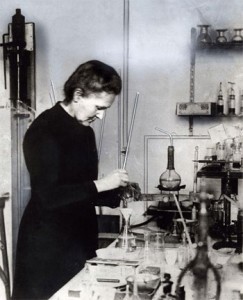Continuing my Science Heroes theme is Barry Marshall, a hero named by the charming Sophia Collins of I’m a Scientist Get Me Outta Here fame, you can follow her on twitter, @imascientist. I must admit that the name Barry Marshal did not immediately ring a bell when Sophia suggested him, although I quickly realized who he was while researching him for this post.
In 2005 Barry J. Marshall and J. Robin Warren were awarded the Nobel Prize in Physiology or Medicine “for their discovery of the bacterium Helicobacter pylori and its role in gastritis and peptic ulcer disease”. An Australian physician and researcher, Barry first came to widespread international attention in 1984 when purposely infected himself with Helicobacter pylori in an attempt to prove that it was the cause of peptic ulcers which could be treated by bismuth and antibiotics. (Do not try this at home!) His resulting illness demonstrated that Helicobacter pylori was indeed a pathogen.
In partnership with Proctor and Gamble (P&G) he patented his work in diagnostics. Through a P&G funded fellowship he spent 10 years at the University of Virginia expanding his research before returning to Australia. Many people treated by Barry wanted to make a donation to his work so he decided “to use the money for patient and doctor education about the research”. In order to combat medical prejudice against trying the new treatments being developed in this area journalists were key in the effort to educate the public about Barry’s ground breaking work in treating ulcers. Finally, in 1994 the National Institute of Health (NIH) released a statement supporting Barry’s claim that Helicobacter pylori is the cause of duodenal and gastric ulcers.
One thing which really stands out in Barry Marshall’s personal statement concerning the story of his success, is that throughout everything his wife was his partner every step of the way. Adrienne is rarely mentioned by others, but she is not only a psychologist in her own right, but his editor, proof-reader, business partner, voice of reason, and mother of their four children. Barry Marshall’s work was critical to the treatment of duodenal and gastric ulcers saving people thousands of dollars and reducing human suffering, but he is also a man who manages to have both a career and a family. In the busy hustle and bustle it is sometimes implied that if you’re not trying to work 24/7 you are somehow less than your peers, but to be truly successful you need to devote yourself note just to your work, but to yourself and to your family and/or friends. The correct work / life balance is different for everyone, but people like Nobel Prize winner Barry Marshall prove that you can indeed have it all.
Who are your science heroes?


